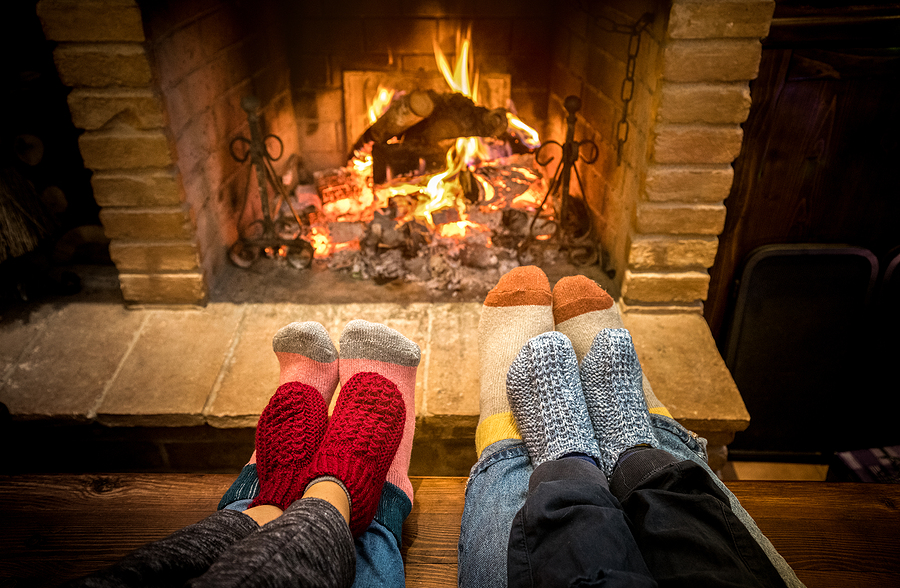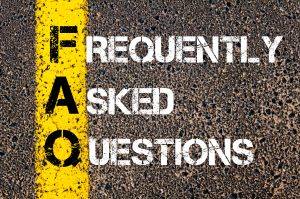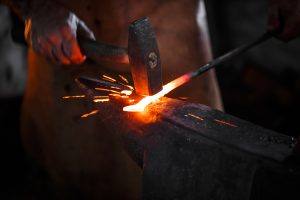Oakland chimney cleaning before starting a fire is not only a safety precaution, but it also helps your fireplace to work more efficiently.
Do you love your fireplace? Us too. There’s nothing better than curling up by a crackling fire on a cold night. But unless you schedule regular chimney cleaning, your fireplace is actually a safety concern. The primary reason to clean a chimney before use is to avoid the risk of starting a house fire. But a fire may also go undetected by home occupants. Here’s how it works…
Creosote? What’s That?
The majority of people burn wood in their fireplace, which means they’re at risk of creosote buildup. With use, this compound known as creosote can line the inside of your chimney. This becomes a problem over time because it’s highly flammable.
There are multiple factors that influence how much creosote will stick to the sides of your chimney. These factors can include things like the amount of air inside the chimney, whether or not you burn unseasoned wood, as well as how many times a year you enjoy your fireplace.
The only reliable way to fully remove creosote from the walls of your chimney is to hire a pro. You need someone who has the right equipment and knowledge to get the job done. Most professional chimney sweeps recommend that you schedule an annual inspection and Oakland chimney cleaning—at the bare minimum. Otherwise, you’re putting your home and household at risk.
Avoiding a House Fire
Historically, most homes were heated by a fireplace, so it was standard knowledge that chimneys needed to be cleaned by chimney sweeps. During this period of time, it was a well-known fact that chimneys required regular maintenance. But now a fireplace is more like a cozy novelty for the majority of homeowners. And, since very few people rely on a fireplace to heat their house these days, knowing how to properly care for a chimney is something homeowners need to relearn.
Although times have changed and we now enjoy the benefits of modern comfort, Oakland chimney cleaning is still necessary in order to prevent house fires. Without regular maintenance, your house runs the risk of becoming a fire statistic. In fact, this costs homeowners over a million dollars in property damage each year, not to mention the number of injuries or deaths. Unfortunately, house fires are still a serious concern.
More specifically, the Chimney Safety Institute of America indicates that chimney fires continue to be a frequent problem. They report that there are an estimated 25,000 chimney fires each year that cause a total of $125 million in damages. If the fire spreads to areas inside the home, injuries and deaths are possible as well.
Recognizing a Chimney Fire
It’s likely that you might not notice a chimney fire. They are slow burns and hardly make a noise. But you may hear loud popping or cracking noises, or see thick, dark smoke coming into the fireplace, or out through the top of the chimney. Flames can also rise out of the top of the chimney, where neighbors sometimes notice them before the problem becomes worse. Some homeowners have reported chimney fires that sound like a jet engine in the house or even a train. But, hopefully, a grimy chimney would never get to that point.
Structural Damage
Chimney fires are especially dangerous since they can burn at temperatures exceeding 2,000 degrees Fahrenheit. Although the fire may not seem to be a problem because it burns off the creosote and is extinguished, these extreme temperatures can cause other problems. For example, 2,000 degrees is more than enough heat to crack tiles and melt mortar. It will weaken the masonry chimney structure.
Without proper chimney cleaning services, the creosote that builds up inside your chimney can contribute to the strength and heat of a fire. This is because it’s a fuel source that allows for rapid combustion. The end result is that the chimney can become damaged by these occurrences. But you may not even realize it without regularly scheduled chimney maintenance. Even if it doesn’t result in a more dangerous fire, you’re in for some costly repairs.
How Often Do You Need Oakland Chimney Cleaning?
Since the average homeowner probably won’t be able to tell if their chimney and fireplace need a little extra TLC, it’s best to plan for an annual inspection. These appointments can save you money in the long run, and also help protect your home. But how often do you actually need Oakland chimney cleaning services?
Unfortunately, it’s unavoidable that when you use your fireplace to burn wood, residue is going to accumulate on the walls. Although the frequency of chimney cleaning may vary (depending on how often you use your fireplace), once a year is usually enough.
rELATED cONTENT: FREQUENTLY ASKED QUESTIONS ABOUT OAKLAND CHIMNEY CLEANING
Preventative Maintenance
It’s always easier to prevent a problem than it is to fix the resulting damage. The best way to make sure that your chimney stays in good shape is to have annual maintenance and cleaning performed.
But some homeowners also want to learn how they can keep their house safer between professional Oakland chimney cleaning . With that in mind, here are a few suggestions that you can use if you want to do more:
- Instead of letting ashes accumulate inside the firebox, regularly clean them out.
- Only burn wood that has been properly seasoned. If you’re using wood that you’ve gathered yourself, allow it to season for at least a year (or more) before burning it. If you purchase wood from a vendor, make sure the company only offers seasoned wood.
- Check to see if the damper is entirely open before starting a fire.
- Never use painted or pressure-treated wood in the fireplace. This will increase the rate of creosote buildup, or possibly create toxic fumes.
- Put the biggest logs on the bottom of the firebox and the smaller ones on top. The fire will burn hotter this way, and produce less smoke.
- Schedule an annual Oakland chimney cleaning with a qualified professional. Hire an experienced Oakland chimney cleaning company to remove tar and creosote buildup.
Related Content: WHEN AND HOW OFTEN SHOULD YOU GET A CHIMNEY INSPECTION?
If you’re going to be using your fireplace this winter, it’s important to have a Chimney Cleaning Before Starting a Fire. This article will explain the importance of getting your chimney cleaned before lighting a fire, and what you can do if
Hire an Oakland Chimney Cleaning Company
When hiring a chimney sweep, it’s best to choose a certified and insured professional. A certified chimney sweep will have the educational background and experience to get the job done right. Contact our friendly team at The Irish Sweep by calling (510) 521-4088.






